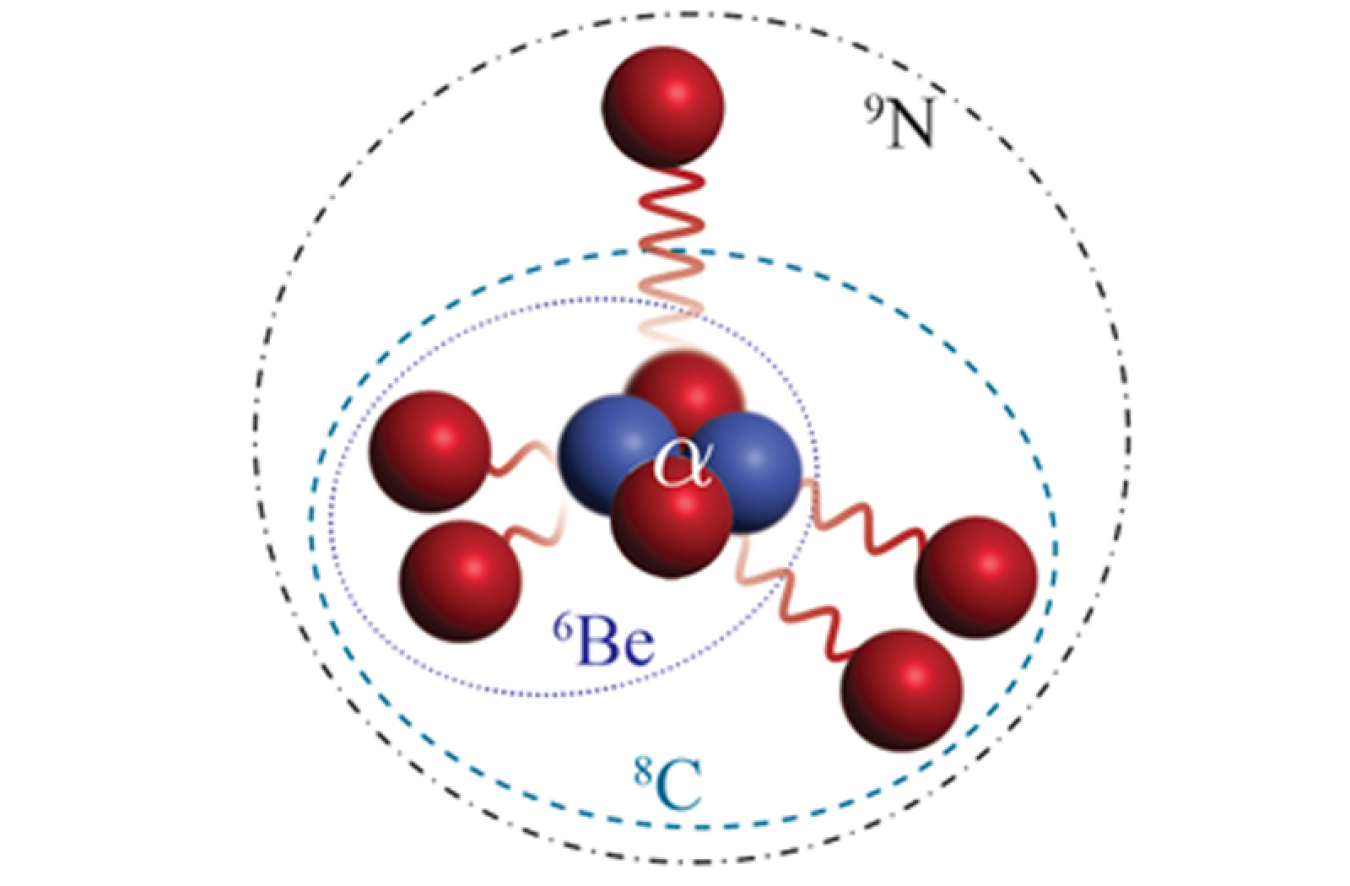
The Science
The discovery of isotopes is one of the drivers of modern science. Stable isotopes make possible biological studies including tracing how substances move through the body. Long-lived radioactive isotopes enable dating on time scales ranging up to the age of the solar system. The shortest-lived isotopes can aid in theoretical studies of quantum systems. Experimentalists and theorists have now provided strong evidence for the creation of a truly exotic isotope, nitrogen-9, which has two neutrons and seven protons. This unbalanced ratio of protons to neutrons produces a nucleus that only survives for less than one-billionth of a nanosecond.
The Impact
This research identified nitrogen-9, an isotope that is overladen with protons. It also provides information on nitrogen-9’s mirror nucleus, helium-9, which has two protons to its seven neutrons. Like nitrogen-9, the neutron-rich helium-9 nucleus is also unstable. Scientists study such isotopes for their potential to offer new insights on the treatment of unstable systems in quantum mechanics and what constitutes an atomic nucleus.
Summary
Experimentalists and theorists recently collaborated to provide strong evidence for the creation of the exotic nuclide nitrogen-9 and the theory to explain it. The experimental technique employed sequential nuclear reactions at the National Superconducting Cyclotron Laboratory to create nitrogen-9. The isotope decayed in front of a highly pixilated detector system able to precisely determine the energy, position, and particle-type of the six coincident particles. The researchers used a technique called invariant-mass spectroscopy (which was also used to discover the Higgs boson) to reconstruct the parent and all the intermediates in the multi-step decay process. State-of-the-art theory that treats both bound and unbound states and scattering explained the observations as a combination of one, or more likely two, resonances. With the aid of theory, the research found the ground-state energy region of this nucleus (and its mirror).
Contact
Experiment
Robert Charity
Washington University in Saint Louis
[email protected]
Theory
Witold Nazarewicz
Facility for Rare Isotope Beams, Michigan State University
[email protected]
Funding
This material is based on work supported by the Department of Energy Office of Science, Office of Nuclear Physics, the National Nuclear Security Administration, the National Science Foundation, and the National Key Research and Development Program and National Science Foundation of China.
Publications
Charity, R. J., et al., Strong evidence for 9N and the limits of existence of atomic nuclei. Physical Review Letters 131, 172501 (2023). [DOI: 10.1103/PhysRevLett.131.172501]
Charity, R. J. and Sobotka, L. G., Invariant-mass spectroscopy in projectile fragmentation reactions, Physical Review C, 108, O44318 (2023). [DOI: 10.1103/PhysRevC.108.044318]
Related Links
Fleeting form of nitrogen stretches nuclear theory to its limits, Science
Physicists get a first glimpse of the elusive isotope nitrogen-9, Science News
Five Protons Spew Out of Extreme Nucleus, Physics Focus
Scraped from https://www.sourcearu.com




